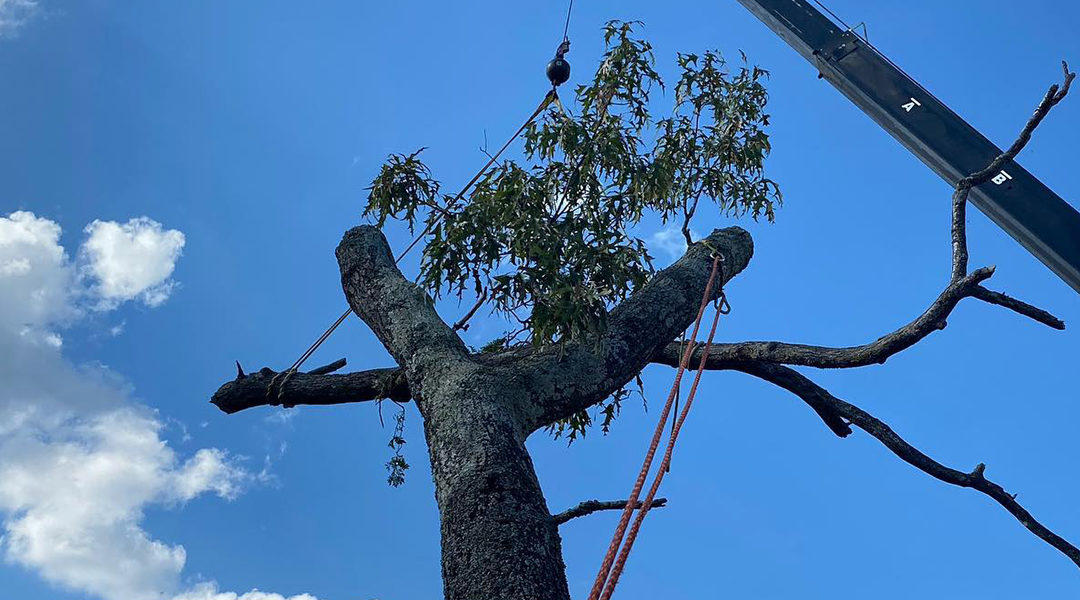Topping trees remains a common practice among misinformed trimmers despite its harmful effects. Also known as heading, tipping, or stubbing, tree topping refers to the cutting back or drastic removal of large branches in mature trees. Topping leaves large, open wounds that leave the tree vulnerable to decay and disease.
Lack of public understanding and myths explain why tree topping still occurs today. Let’s discuss some reasons you shouldn’t have your trees topped.
Reach out today for Hot Springs tree service by Urban Jacks Tree Service.
Topping Trees May Lead to Starvation
Trees need leaves to manufacture food that eventually gets transported to the roots. Since topping can remove a significant percentage of a tree’s leafy crown, the tree may struggle to manufacture sufficient food. Consequently, the roots can no longer grow and transport water and nutrients to the leaves, ultimately compromising the tree’s health and starving it of vital nutrients.
Topping Trees Can Invite Insects and Disease
Large wounds typically inflicted during tree topping have difficulty closing and healing. Cuts between lateral branches and along a limb create wounds that the tree may struggle to close. The size and location of the cuts prevent the tree’s natural defense system from functioning as it should.
Open wounds can also invite insect invasions and the spread of fungi. If a tree’s exposed wood tissues decay, cutting off the affected limb only speeds up the decaying process.
Topping Can Lead to Risky Growth
A tree’s survival mechanism causes it to produce multiple shoots below each topping cut. These fresh shoots proliferate, but may break easily, especially during windy or icy conditions. Unfortunately, such growth comes at a great expense to the tree and surrounding property or plants.
While topping aims to reduce the risk of limb breakage by reducing a tree’s height, new limb growth attaches weakly to the remaining parent branches, compromising the tree’s structural integrity.
Topping Trees May Lead to Tree Death
Some tree species cannot tolerate tree topping. If a tree sprouts little after severe topping, the resulting lack of foliage reduces the tree’s ability to capture sunlight and manufacture food. Limited food production may cause the tree’s death.
Topping Trees Is Expensive
While tree topping may seem like a bargain when compared to recommended practices, it results in several hidden costs, including:
Increased maintenance: If a tree survives, it will probably require corrective pruning. If it dies, you’ll have to remove it.
Reduced property value: Well-maintained, healthy trees can add to a property’s value. Topped trees cost more to maintain, lowering the property’s value.
Increased liability potential: Because certified arborists consider topping unacceptable, any damage caused by tree topping may lead to negligence charges.
Topping Makes Trees Ugly
Trees form various growth habits and shapes designed to present their leaves to the sun. Topping removes the ends of the branches, leaving ugly stubs that disfigure and mutilate a tree. A topped tree never fully regains its natural form.
Alternatives To Topping
Sometimes, you must reduce a tree’s height or spread for various reasons. Arborists may recommend techniques such as crown reduction or crown thinning as alternatives to topping trees. They know where and how to make needed cuts to reduce the crown and help develop a stronger, more aesthetically appealing tree. Sometimes, an arborist may recommend tree removal and replacement when appropriate.
Urban Jacks Tree Service provides top-notch tree care and maintenance services from Hot Springs to Malvern. Contact us online or dial (501) 547-4018 to request a free quote and learn how to care for trees in the summer.

